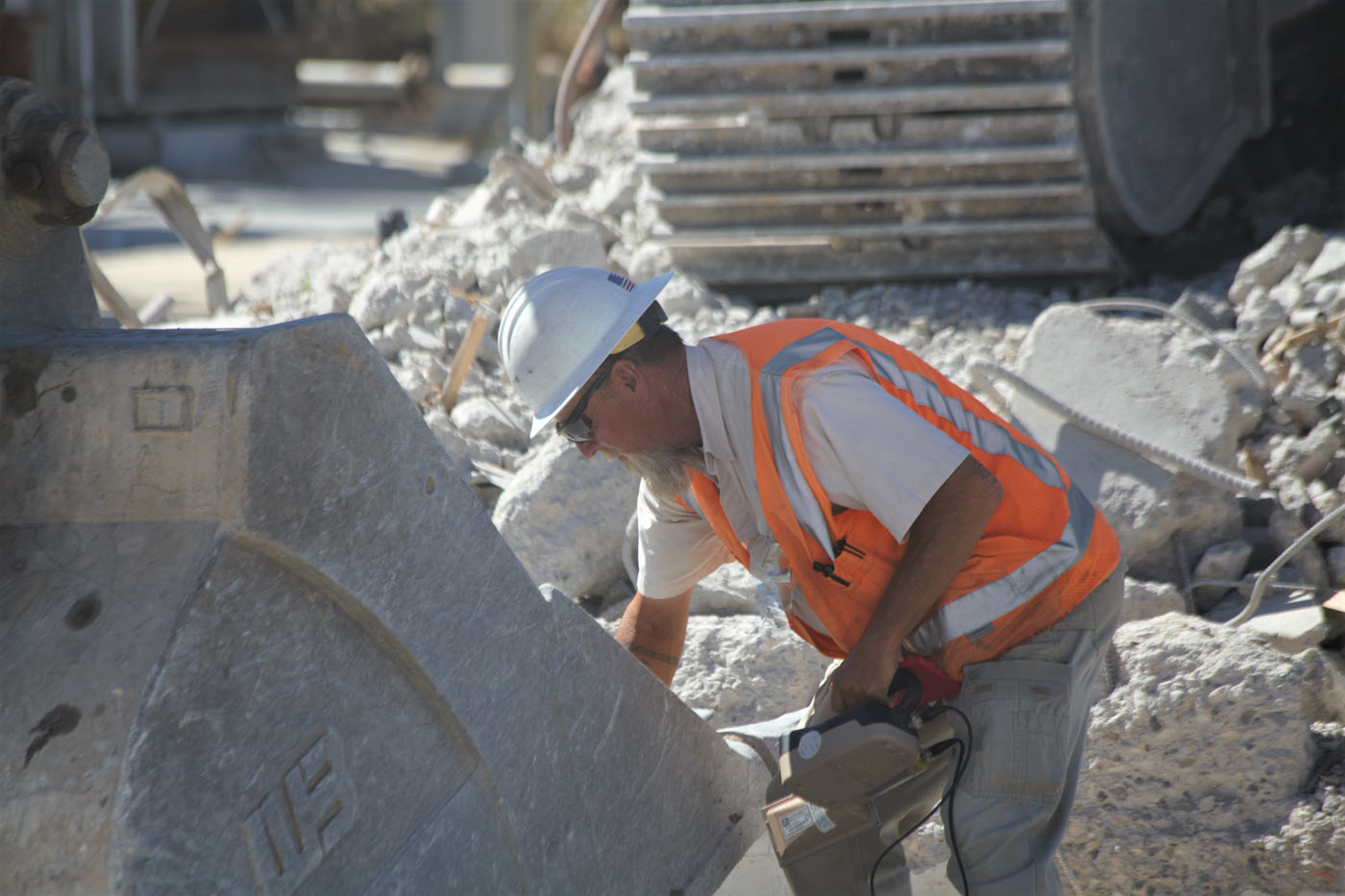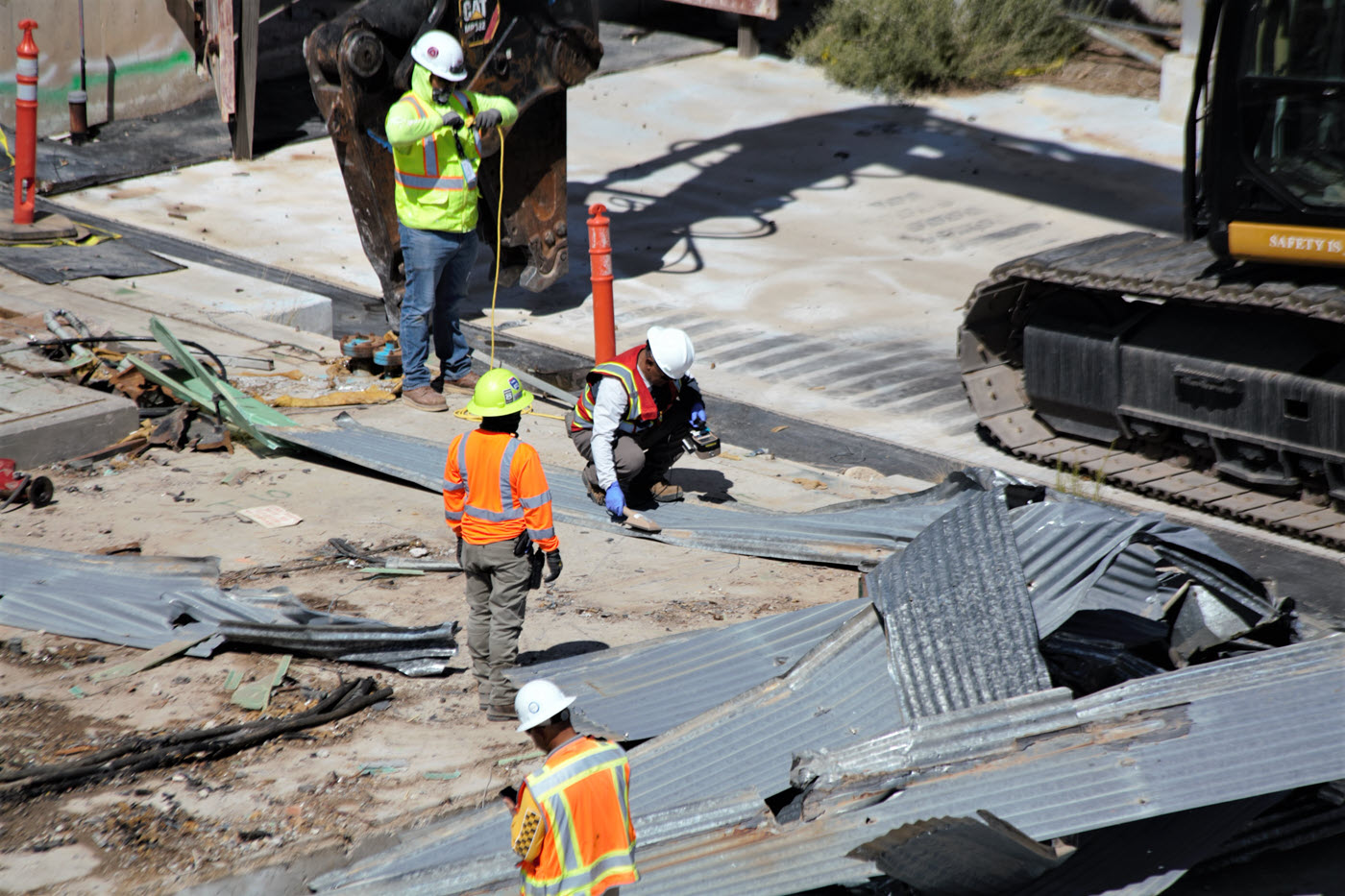Radiological control technicians (RCTs) are integral to cleanup and remediation performed by the EM Nevada Program at the Nevada National Security Sites (NNSS), yet they can go unnoticed in day-to-day operations.
On any given day, an RCT can perform several duties, from routine performance tests of radiation detection instruments to radiation and contamination monitoring, air sampling, posting and labeling, access control, material clearance surveys and radioactive waste surveys. Their duties protect EM employees and their contractors that have contact with radioactive material.
During the recent demolition of four buildings at the Test Cell C (TCC) Facility, which met an EM 2023 priority early, RCTs were busy contributing to the safe and secure work at the legacy site.


At TCC, crew members used excavators with hydraulic shears and hammers to bring down the buildings. Trucks were loaded with debris, and RCTs scanned the buckets of each excavator to ensure debris destined for industrial disposal did not contain radionuclides.
On a day in early July, EM Nevada RCT Bob Moore held that responsibility. He scanned each excavator bucket with a device that detects both alpha and beta particles and swiped the bucket to test for loose contamination. If any radiation above action levels was detected, work would pause immediately.
“We have to make sure that whatever they’re picking up and putting into the bucket isn’t contaminating the bucket with radioactivity,” said fellow RCT JC Castro.
Castro’s role was to monitor each truck at the gate before leaving TCC. Castro made dose readings of each truck and swiped the tires to further check for radioactive material. He also ensured each truck survey was properly documented.
The waste created during demolition work at TCC was primarily industrial waste, meaning it was determined to not contain hazardous chemicals or radiological contamination above the industrial landfill’s waste acceptance criteria.


“It’s industrial waste unless it’s not,” Castro said. “Unless Bob detects something off the bucket, or if I detect something off the dose instrument meter… I also take swipes off the front and back tires because they’re the most likely to pick up contamination. At any one of these surveys, if we find any contamination, we have to stop.
“The procedure is to contact our supervisors, inform them of the situation, inform our Radiological Services Manager Mike Van Der Karr, and then they decide how to proceed,” Castro said.
Debris deemed industrial waste was transported and disposed of at the NNSS Area 9 U-10c landfill. For Moore, who has worked at the NNSS since 1997, it was just another day on the job.
“Pretty typical. If anything, this was a smaller job.” Moore said of the work at TCC.
But the impact of RCTs at the job site was anything but small.
Months of preparatory work were completed prior to a single construction vehicle entering TCC. RCTs were present through it all. While crews spent months on characterization and hazard-reduction activities at TCC, RCTs were present. When abatement work was being done, which included the removal of hazardous waste and asbestos and allowed crew members to perform “open air” demolition, RCTs were there every step of the way. These preparatory measures ensured the majority of waste was industrial waste, and the diligent work of RCTs supported worker safety throughout the entire demolition process.
“RCTs are essential to the EM Nevada mission — and a significant reason the demolition of four buildings at TCC was completed safely, securely and successfully,” said Radiological Services Manager Mike Van Der Karr.

